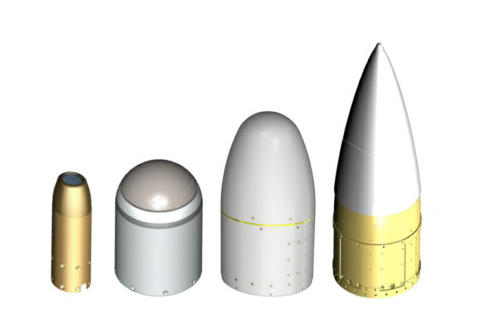Research & Development (NotUsed)
Seeker
Seeker

Electro-optical seeker
The types of electro-optical seekers that detect electromagnetic waves with short wavelengths from visible rays to infrared band include infra-red seekers, infrared image seekers, TV seekers, which are called visible ray image seekers, and laser seekers.
An electro-optical seeker is limited for short-range operation as its atmospheric transmittance is lower than that of a microwave seeker, and while it has the disadvantage of being affected by the meteorological environment such as rain, fog and dust, it has the advantages that precise target tracking information can be generated as its angular resolution is higher, and that its countermeasure is excellent. In particular, the image seeker is the only seeker with no restriction on object targets.
While an infrared seeker can be operated day and night because it uses the signals emitted by targets, a visible ray image seeker has the disadvantage that it cannot be operated at night because it uses reflected signals. However, the visible ray image seeker has high covertness capable of fire and forget operation because it is all operated in a passive mode.
A laser seeker uses the method of tracking targets by shooting a laser pulse at a target and detecting the reflected laser signals. While it is lightweight, has a relatively simple structure, is low in price, and has superior target hitting accuracy, it has the risk of being exposed to the enemy because it uses a semi-active method where the laser should be continuously pointed at the target from the external payload. However, this seeker for guided weapons is continuously upgraded by advanced countries due to its high reliability.
Microwave seeker
Microwave seekers include ones applied to missiles for defense against aircraft, helicopters and ballistic missiles infiltrating through the air, ones for missiles for defense against small, medium and large surface ships approaching by sea, and ones for ground defense applied to missiles for defense against tanks and mobile launchers.
A microwave seeker located at the front of a missile transmits microwaves ranging from several GHz to several tens of GHz in the direction of a target through the seeker antenna, receives the microwave signals reflected by the target, and extracts angle, speed, distance and image information from the signals.
Multi-mode seeker
A multi-mode seeker is a composite seeker that has the advantages of a microwave sensor that is capable of all-weather operation and has superior range resolution and of an infrared sensor and visible ray sensor that has superior angular resolution. It can overcome the limits of a single sensor with all-weather performance, and can more effectively acquire/track surface ship targets, fixed and mobile ground targets and airborne targets by combining multiple sensors into one seeker.

